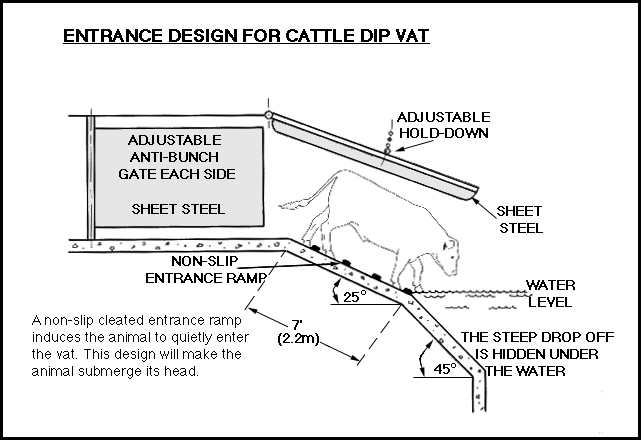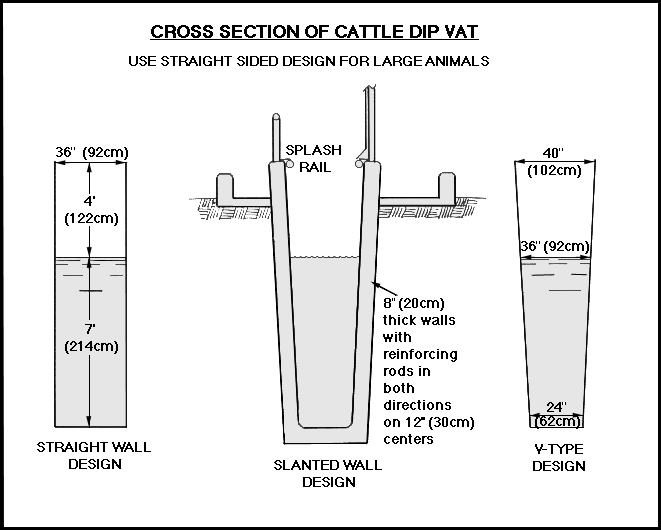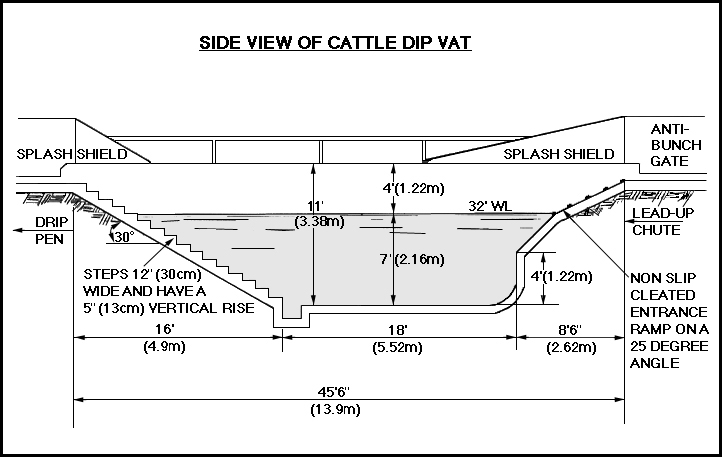 |
by Temple Grandin
 |
Throughout the world, there is a renewed interest in cattle dip vats (plunge dips) to kill external parasites. To be effective, the animal must be completely submerged. The advantage of this design is that it encourages the animal to become fully submerged. It also reduces splashing because the adjustable hold down prevents wild leaping. Reducing splashing also reduces the risks of chemicals getting on people.
The ramp has a nonslip surface and the animal walks down it. It is NOT a slide. Do NOT make a slide. The 25 degree angle of the ramp orients the animal's center of gravity towards the water, and there is a steep drop off at the end of the ramp that is hidden under the water. When the entering animal steps off the end of the 25 degree ramp, it falls in. The cattle keep moving forward because the ramp appears to continue into the water. With this design, it is possible to eliminate the use of poles to force the heads of the animals under the water. When the animal steps out over the seep drop off, it falls in.
To prevent drowing, only one animal should enter the vat at a time. Animal entry can either be controlled with a sliding gate or an anti-bunch gate. The two anti-bunch gates are positioned to narrow the entrance so that only one animal can enter at a time.
Figure 2 and 3 show a cross section of the deep vat and a full side view. To further prevent splashing, the vat side wall extends 4 ft (1.22 m) above the water line. On the top edge, a 4 in (8 cm) splash rail also helps to redue splashing. For most cattle, the vat can have straight walls spaced 36 in (92 cm) apart. A stairstep exit ramp facilitates exiting.
 |
 |
 Click here to return to the Homepage for more information on animal behavior, welfare, and care.
Click here to return to the Homepage for more information on animal behavior, welfare, and care.